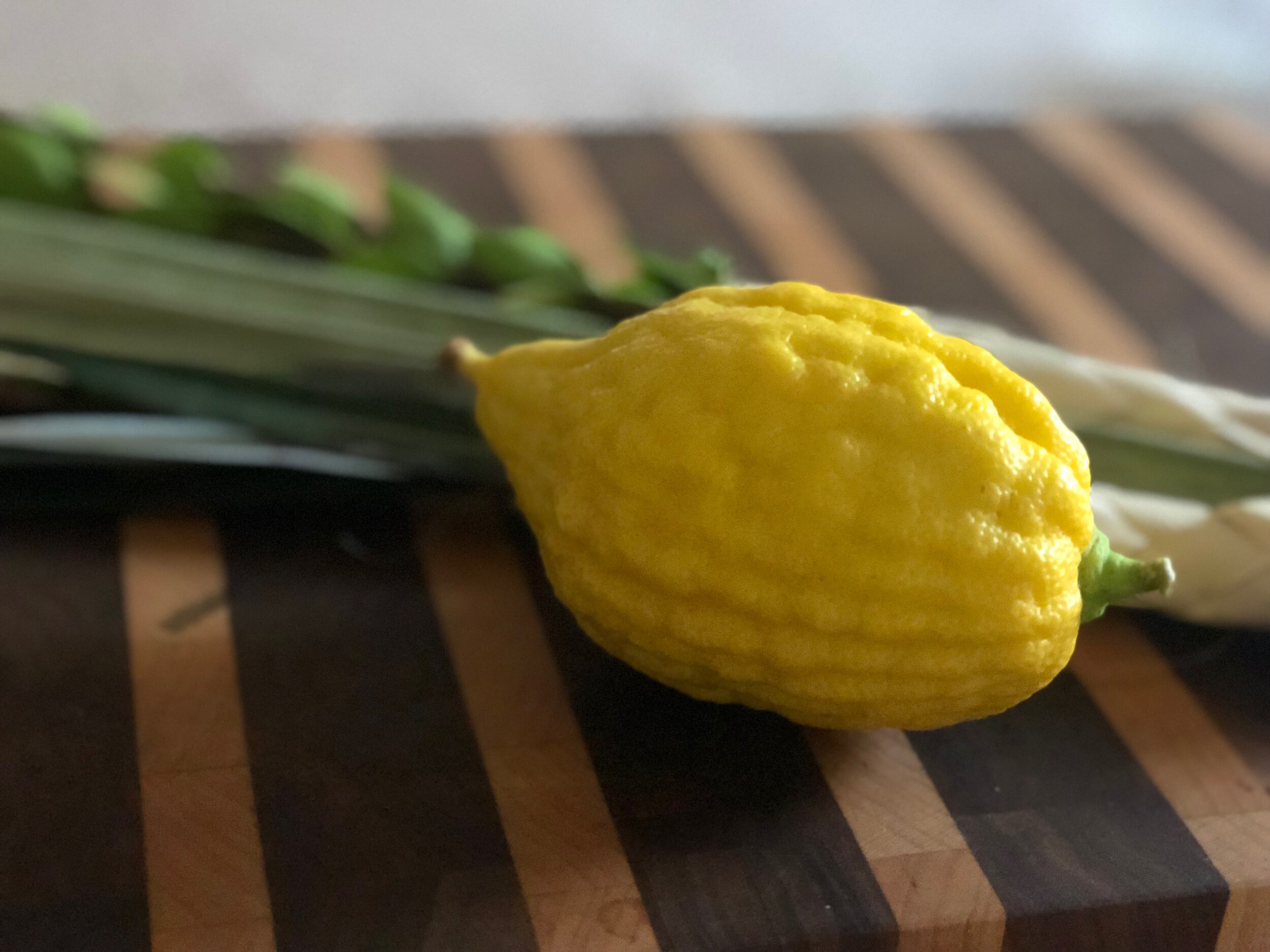The Secret History of the Etrog (aka Citron)
/“To everything there is a season. And a time for every purpose under heaven.”
Last week was the Jewish festival of Sukkot, a very joyous time of year on the Jewish calendar. The holiday commemorates the protection that G-d provided the Children of Israel in the desert when we left Egypt. Sukkot is also the celebration of the fall harvest.
One of the many visible symbols of the Sukkot festival is the etrog. It is ceremonially waved along with the lulav (palm frond), myrtle twigs and willow twigs. You probably know the etrog by its English name, the citron.
What Is An Etrog?
Etrog slices with rind, pulp and seeds
The etrog is a strange-looking fruit. It resembles a bumpy lemon. I always assumed that it was an off-shoot of the lemon. In fact, the lemon and lime genetically derive from the etrog. The fruit has very little pulp and is mostly thick rind with aromatic skin and lots of seeds. In ancient cultures, those seeds symbolized fertility.
Where Did This Quirky Fruit Come From?
The etrog originated in the southwestern Chinese province of Yunnan. It then traveled to northeastern India, where it became incorporated into Ayurvedic medicine. Given its strong history of medicinal uses, the etrog may even be considered a superfood. It eventually spread to the Persian Empire and the Mediterranean region once Darius I conquered India.
The most commonly used Etrog comes from Calabria, Italy. It is one of the three major exporters of etrogs, along with Israel and Morocco. In order to remain kosher for the holiday, they cannot be grafted onto other hardier citrus trees. Ironically, that preference for purity means that there has been very little cross-breeding for hundreds of years, so the etrog of today may truly be an ancient fruit.
What Do You Do With An Etrog?
The etrog is very unlike most other fruits: it does not spoil; rather, it shrivels over time. And there is precious little juice. So culinary options are limited.
After we are done with using it for the Sukkot holiday, my wife makes a tasty jam. Some people in our community make etrog liquor. The fruit’s aroma is really quite lovely, regardless of how it’s used.
Wait, What? Meet The Buddha’s Hand Citron
A close cousin of the etrog is the Buddha’s Hand citron. We encountered this at the Hollywood Farmer’s Market last week. This strange-looking exotic fruit resembles a very lumpy lemon with fingers. Or a squid made out of yellow rind. It is downright weird. It looks so darn cool that my kids keep nagging me to buy one!
What Is This Creepy-Looking Fruit?
The Buddha’s Hand is a hybrid of the etrog (citron) that originated in the Yangtze Valley of China. In Chinese and Japanese culture, it symbolizes happiness, wealth and longevity.
What Do You Do With A Buddha’s Hand Citron?
You can throw it in your laundry machine. The lavender-like aroma is so alluring that the ancient Chinese used to wash their clothes with the fruit. You could use it as citrus zest. Or you could cut it up in small pieces and fry it. Either way, the fragrance apparently can’t be beat.
What’s the weirdest fruit that you’ve ever encountered? I’d love to hear about it in the comments below!





